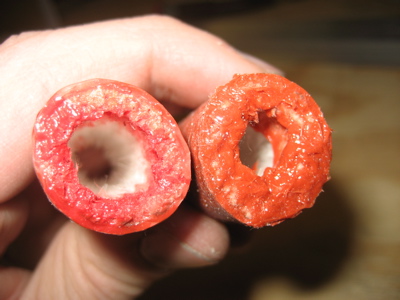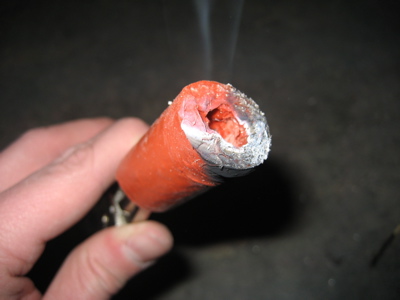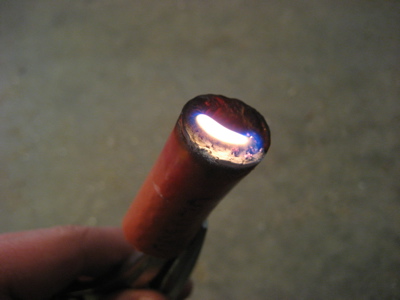Fuel and oil hoses in the engine compartment are protected by firesleeve, which is like a piece of fire-resistant silicone tubing filled with asbestos fluff – well, probably not actual asbestos, but close enough. Because the throttle and mixture control cables come so close to the exhaust pipes, it's a good idea to firesleeve them too (firesleeve is both a noun and a verb!).
To keep the inner lining from soaking up oil and moisture, which would ruin its fire-resistant properties, it's necessary to dip the cut ends of the firesleeve in some kind of waterproof substance. There is a genuine aviation-grade "end dip" that's used by certified shops, but it sells for the outrageous price of $117.95 a quart! No way am I paying that much. So, I figured there were basically two readily available substances that could be used as a homebrew firesleeve end dip: Plasti-Dip and plain old RTV
In the interest of science, I procured a container of each and used the products within to treat the ends of a pair of two-inch lengths of firesleeve. After letting them cure overnight, I evaluated the results. The Plasti-Dip (on the left in the photo below) was more brittle than I had expected, and developed cracks when the firesleeve was flexed gently. The RTV remained slightly rubbery, as it is wont to do, and the end of its test piece remained well sealed after the flex test. Advantage: RTV.

Then I got out the matches and started burning stuff. When exposed to direct flame, the RTV became charred and began to emit a small amount of smoke, but would not ignite. This seemed like appropriate behavior for the end of a piece of firesleeve.

The Plasti-Dip sample, on the other hand, caught fire quickly and burned like a candle until I snuffed it out:

Conclusion: I will treat the ends of my firesleeve with RTV, and leave the Plasti-Dip for the occasional screwdriver handle.